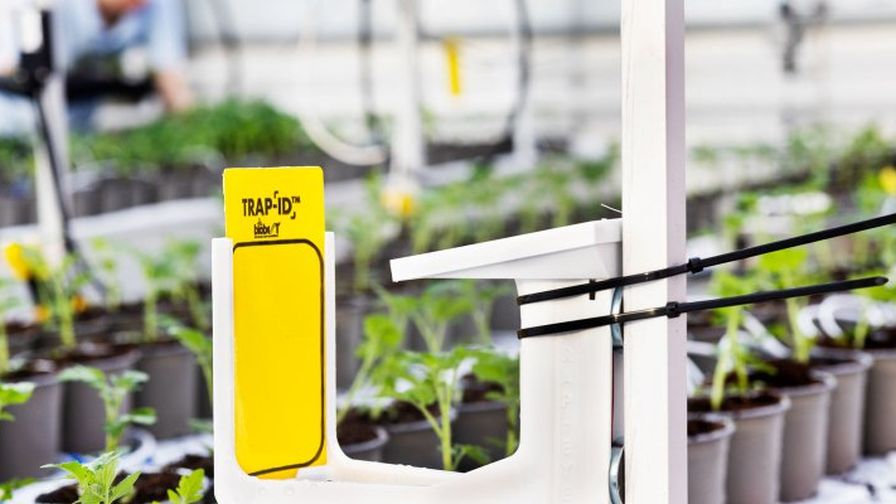
TRAP-ID in the Autonomous Greenhouse Challenge | Wageningen University and Research (WUR)
Wageningen University & Research (WUR) made biological crop protection a part of the Autonomous Greenhouse Challenge for the first time this year. Every week, competing teams recommended the right type and number of biological control agents to protect their dwarf tomatoes from whiteflies. If their recommendations were correct, the teams earned points that were counted in the final score of the Challenge.
Denise Huyskes, Pest Control Advisor from the BU Greenhouse Horticulture at WUR, explained how she incorporated integrated pest management (IPM) into the competition.
“With an algorithm, you can autonomously control a greenhouse crop from small plant to mature crop. However, current technological resources do not allow you to monitor pests remotely and manage them with pest control,” says Huyskes. “It all needs to be done manually. I do that by scouting. This involves walking through the greenhouse checking for diseases and pests on the crops. These range from flies and lice to fungi. I then see how an infestation can be managed with chemical or biological crop protection.”
Huyskes went on to explain how IPM provided an additional learning opportunity for participants in the Autonomous Greenhouse Challenge.
“In previous competitions, the focus was mainly on the technology relating to crop development. This year, we wanted to add a learning element. We opted for biological crop protection,” says Huyskes. “To guide teams in this, we joined forces with Biobest consultants and producers to develop a program. We also devised a kind of challenge within the Challenge, in which teams could earn points for crop protection. These points were 20% of the final score.”
Advice for Protecting Against Whiteflies
Since Challenge participants grew dwarf tomatoes this year, whiteflies posed a threat to their crops.
“This fly lays eggs on the leaves,” says Huyskes. “Frass is another threat, causing sooty mold on the leaves which can stunt plant growth. During the challenge, whitefly was actually present in the greenhouses. Every Tuesday, I went into the greenhouses to scout them. The number of whiteflies was also monitored via the Trap-Eye. This system takes pictures of traps on which the pests stick. I then entered all this data on Biobest’s scout app.”
How Teams Earned Extra Points
Teams were then given until noon every Thursday to indicate the type and quantity of biological crop control they wanted to use.
“They could choose between two types of parasitic wasps and using a predatory bug,” explains Huyskes. “Based on my own expertise, I calculated which species and how many of them could best be used to tackle whiteflies. Teams earned points if their scouting advice matched mine. It is very important to use the correct type and quantity of pest control. For example, using too many predatory bugs can damage crops. And if you use too few, the infestation can spread.”
How IPM Helped Improve Performance
Huyskes noticed that the teams’ performance in pest control improved as the Challenge progressed.
“In the first weeks, they were still finding their way and didn’t really know what to do,” she says. “That produced some very strange advice with far too little or conversely too much pest control. As a result, I gave very few or no points for the first few times. But gradually the participants started to get the idea of how it all worked. That was mainly because I shared my advice from the weeks before with them. Towards the end of the Challenge, I was regularly able to give them full marks. I found that learning curve really interesting and fun.”
About the Autonomous Greenhouse Challenge
Now in its fourth year, the Autonomous Greenhouse Challenge aims to show how computer algorithms can increase crop production while saving energy. Past competitions have focused on artificial intelligence (AI) and automation. To learn more about the history of the Challenge, visit WUR’s website.

